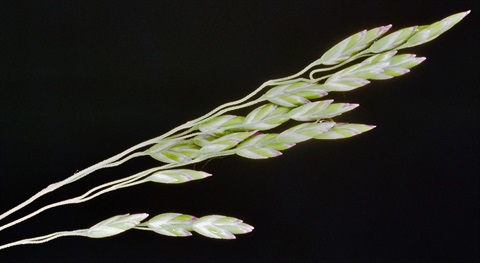
Poa sieberiana var. sieberiana
Grey Tussock Grass
Dense green to greyish-green tufted perennial with erect flowering stems.
Additional information
- FamilyPoaceae
- StoreyLower storey
- Size15-30 cm x 40 cm, stems to 0.8 cm high
- Plant groupingGrasses, Rushes & Sedges
- LeavesFine, often curled, rough, inrolled to round leaves, to 30 cm x 0.7 mm. Sheath pale.
- Flower colourGreen or purplish
- Flowering timeOctober to March
- FlowersOpen pyramidal flowerhead, to 20 cm x 12 cm, 2-7-flowered spikelets; lower bracts 3-veined, lower floral bract 5-veined, short hairs on lower part, longer on keel and outer veins, web weak or absent.
- Bird attractingSeeds, habitat - nesting materials
- Butterfly attractingFood plant for caterpillars
- Frog habitatNo
- Growing conditionsMost widespread poa, in moist to dry well drained soils. Frost and snow tolerant. Full sun semi shade.
- Garden useUseful smaller tussock grass for rockeries, borders, massed planting. Establishes well under trees. Plant in drifts.
- Commercially availableAustralian plant & indigenous nurseries
- Conservation statusWidespread within the Shire
- Aboriginal Use Leaves - string and basket-making
- Related speciesPoa sieberiana var. hirtella has leaves sparsely covered in flattened, short stiff hairs. It occurs in one known area in shrubby foothill forest. Poa sieberiana var. cyanophylla has very fine, rough, bluish leaves and is not tufted but roots along an underground stem. P. sieberiana is sometimes confused with Poa labillardierei and is probably more widespread in the Shire. The latter is larger with folded leaves. The lower floral bract has hairs only on the keel and veins and has a well developed web.
Photo Gallery
Photographer/s: Peter Kinchington ©
Plant Communities